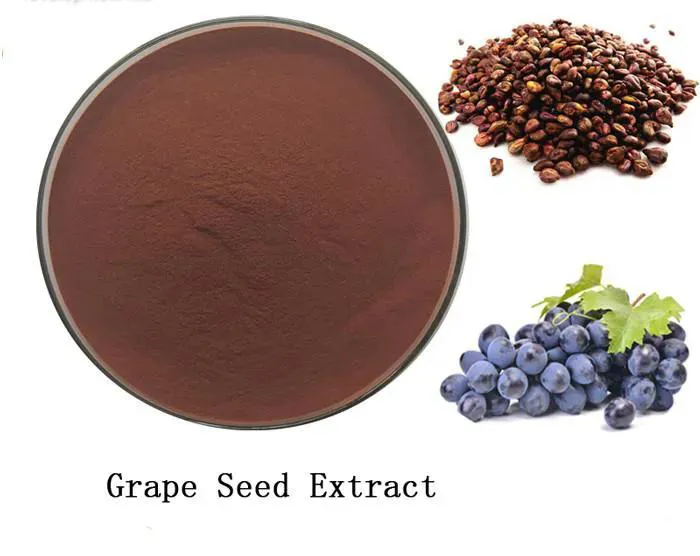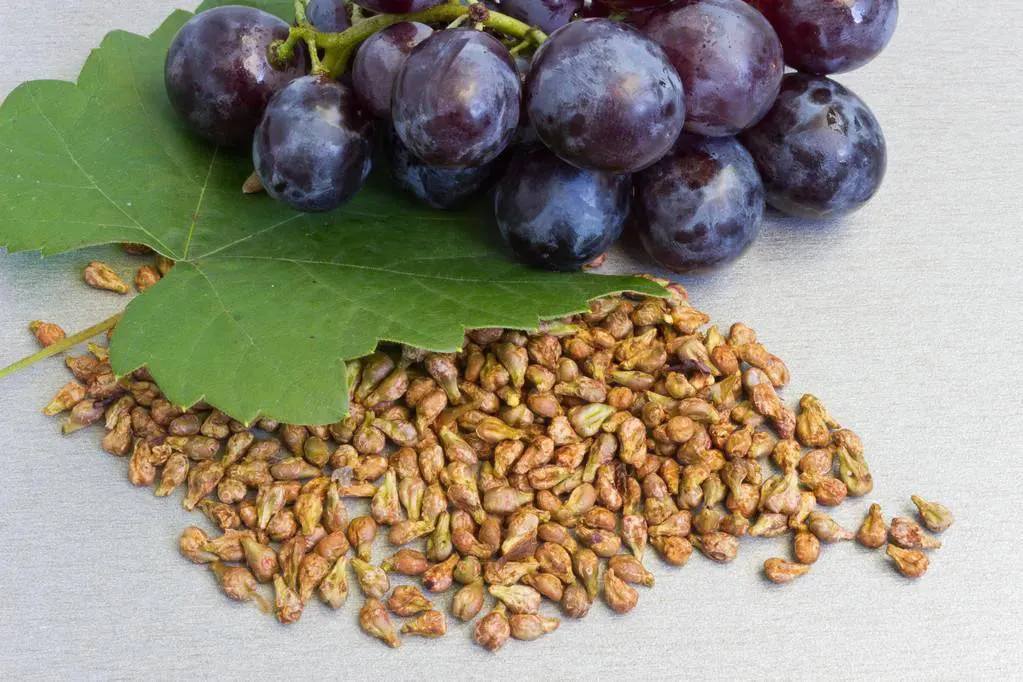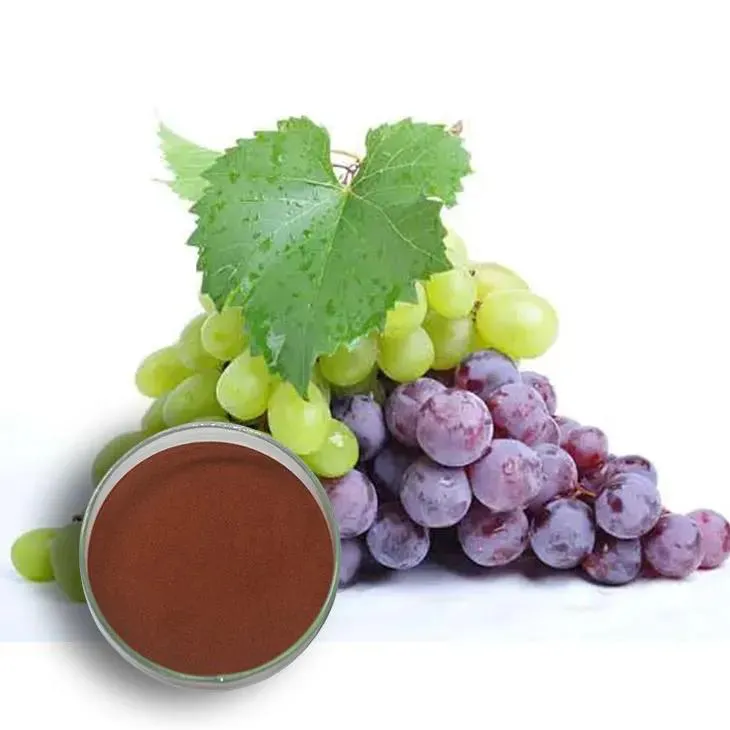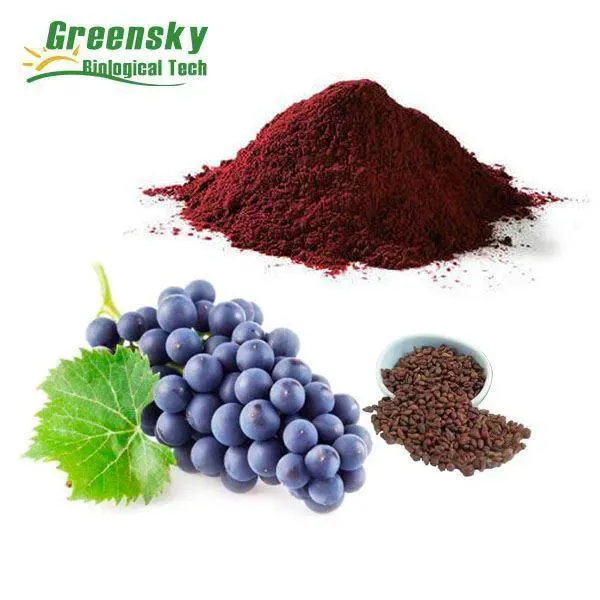- 0086-571-85302990
- sales@greenskybio.com
Harnessing the Future of Antimicrobials: Grape Seed Extract Research Directions
2024-08-04

1. Introduction
The rise of antimicrobial resistance has become a global health crisis. As traditional antibiotics lose their efficacy against many pathogens, the search for alternative antimicrobial agents has intensified. Grape Seed Extract (GSE) has emerged as a promising candidate in this regard. GSE is rich in polyphenols, such as proanthocyanidins, which have shown various biological activities including antioxidant, anti - inflammatory, and antimicrobial properties. Understanding the potential of GSE in antimicrobial use and exploring the research directions are crucial for harnessing its future in this field.

2. Unique Characteristics of Grape Seed Extract
2.1. Chemical Composition
The main components of GSE are polyphenols, particularly proanthocyanidins. These are oligomers or polymers of flavan - 3 - ol units. Proanthocyanidins are known for their antioxidant activity, which may be related to their antimicrobial properties. They can scavenge free radicals and protect cells from oxidative damage. Additionally, GSE contains other phenolic compounds, such as phenolic acids and flavonoids, which may also contribute to its overall biological effects.2.2. Antioxidant Activity
The antioxidant activity of GSE is one of its most notable characteristics. Oxidative stress can play a role in the pathogenesis of many infections. By reducing oxidative stress, GSE may enhance the host's immune response and limit the damage caused by pathogens. This antioxidant activity can also prevent the oxidation of lipids and proteins in cells, which may be relevant to its antimicrobial mechanism. For example, in some in - vitro studies, GSE has been shown to protect cells from oxidative damage caused by bacterial toxins.
3. Antimicrobial Properties of Grape Seed Extract
3.1. Activity Against Bacteria
GSE has demonstrated antibacterial activity against a wide range of bacteria. In vitro studies have shown that it can inhibit the growth of both gram - positive and gram - negative bacteria. For example, it has been effective against Staphylococcus aureus, a common gram - positive pathogen responsible for many skin and soft - tissue infections. Against gram - negative bacteria such as Escherichia coli, GSE has also shown inhibitory effects. The mechanism of action may involve disrupting the bacterial cell membrane, interfering with bacterial metabolism, or inhibiting bacterial adhesion to host cells.3.2. Activity Against Fungi
Fungal infections are also a significant concern, especially in immunocompromised individuals. GSE has shown antifungal activity against various fungi, including Candida albicans, which is a common cause of yeast infections. The antifungal effect may be due to its ability to disrupt the fungal cell wall or membrane, or to interfere with fungal growth and reproduction processes.3.3. Activity Against Viruses
Some preliminary research has suggested that GSE may have antiviral activity. Although the data on its antiviral effects are less extensive compared to its antibacterial and antifungal activities, there are indications that it may be able to inhibit the replication of certain viruses. For example, in some cell - based assays, GSE has shown potential in inhibiting the replication of influenza viruses. However, more in - depth research is needed to fully understand its antiviral mechanisms.
4. Possible Interactions in Antimicrobial Use
4.1. Synergistic Interactions
One of the interesting aspects of GSE in antimicrobial use is its potential for synergistic interactions. It may work in combination with existing antibiotics to enhance their effectiveness. For example, in some studies, GSE has been shown to enhance the antibacterial activity of certain beta - lactam antibiotics. This synergy could be due to different mechanisms of action. GSE may disrupt the bacterial cell membrane, allowing the antibiotics to more easily reach their targets within the cell.4.2. Interactions with the Host Immune System
GSE may also interact with the host immune system in ways that contribute to its antimicrobial effects. It has been shown to modulate the immune response, for example, by enhancing the activity of macrophages, which are cells that play a crucial role in phagocytosing and eliminating pathogens. By boosting the immune system, GSE can help the body fight off infections more effectively, in addition to its direct antimicrobial action.
5. Research Directions for Grape Seed Extract in Antimicrobial Use
5.1. Mechanistic Studies
- Cellular and Molecular Mechanisms: To fully understand how GSE exerts its antimicrobial effects, more in - depth studies at the cellular and molecular levels are needed. This includes investigating how GSE interacts with bacterial, fungal, or viral components at the molecular level. For example, researchers could use techniques such as proteomics and genomics to identify the specific targets of GSE within pathogens. - Mechanisms of Synergy: As mentioned earlier, GSE may have synergistic interactions with antibiotics. Future research should focus on elucidating the exact mechanisms behind these synergistic effects. This could involve studying how GSE affects the pharmacokinetics and pharmacodynamics of antibiotics, as well as how it modifies the antibiotic - resistant mechanisms of bacteria.5.2. In - vivo Studies
- Animal Models: While in - vitro studies have provided valuable insights into the antimicrobial properties of GSE, in - vivo studies are essential to determine its efficacy and safety in living organisms. Animal models can be used to study the effects of GSE on various infections. For example, in murine models of bacterial infections, researchers can investigate how GSE affects the course of the infection, including parameters such as bacterial load, survival rate, and immune response. - Clinical Trials: Ultimately, clinical trials are necessary to evaluate the potential of GSE as an antimicrobial agent in humans. These trials should be designed to assess the efficacy of GSE in treating different types of infections, as well as its safety and tolerability. Clinical trials could also explore the optimal dosage and administration route of GSE for antimicrobial use.5.3. Formulation and Delivery
- Improving Bioavailability: One of the challenges in using GSE as an antimicrobial agent is its relatively low bioavailability. Future research could focus on developing new formulations or delivery systems to improve its bioavailability. This could include encapsulation techniques or the use of nanotechnology to enhance the absorption and distribution of GSE in the body. - Targeted Delivery: Another aspect of formulation and delivery is targeted delivery. By designing delivery systems that can specifically target pathogens or infected tissues, the effectiveness of GSE as an antimicrobial agent can be enhanced. For example, liposomal formulations could be developed to target GSE to bacterial cells, increasing its local concentration and thus its antimicrobial activity.6. Implications for Different Fields
6.1. Healthcare
- Treatment of Infections: In the healthcare field, GSE could potentially be used as an alternative or adjunct to traditional antibiotics for the treatment of various infections. It may be particularly useful in cases where antibiotic - resistant pathogens are involved. For example, in the treatment of chronic wound infections caused by resistant bacteria, GSE could be explored as a potential treatment option. - Preventive Measures: GSE may also have a role in preventive healthcare. Its antioxidant and antimicrobial properties could be utilized to prevent infections, especially in high - risk populations such as the elderly or immunocompromised individuals. For instance, it could be incorporated into dietary supplements or functional foods for preventive purposes.6.2. Food Industry
- Food Preservation: In the food industry, GSE has the potential to be used as a natural preservative. It can inhibit the growth of spoilage and pathogenic microorganisms in food, thus extending the shelf - life of food products. For example, in the preservation of fruits, vegetables, and meat products, GSE could be an effective alternative to synthetic preservatives. - Food Safety: GSE can also contribute to food safety by reducing the risk of foodborne infections. By inhibiting the growth of pathogenic bacteria such as Salmonella and Listeria in food, it can help ensure the safety of the food supply.6.3. Agriculture
- Plant Protection: In agriculture, GSE could be used as a natural pesticide or fungicide. It can protect plants from fungal and bacterial infections, reducing the need for synthetic pesticides. For example, in the protection of grapevines themselves, GSE could be sprayed on the plants to prevent fungal diseases. - Animal Health: GSE may also have applications in animal health. It could be used to prevent and treat infections in livestock, reducing the use of antibiotics in animal farming. This is important in the context of reducing the spread of antibiotic - resistant bacteria from animals to humans.7. Conclusion
Grape seed extract shows great promise as an antimicrobial agent due to its unique characteristics and antimicrobial properties. However, further research is needed in various aspects, including mechanistic studies, in - vivo investigations, and formulation development. Understanding these research directions and exploring the potential of GSE in different fields will be crucial for harnessing its future as a valuable antimicrobial resource. As the global need for alternative antimicrobial solutions continues to grow, GSE may play an important role in the fight against microbial infections.
FAQ:
What are the unique characteristics of grape seed extract relevant to antimicrobials?
Grape seed extract contains various bioactive compounds such as proanthocyanidins. These compounds have antioxidant properties which can also play a role in antimicrobial activity. They can disrupt the cell membranes of microorganisms, interfere with their metabolic processes, and prevent their growth and reproduction. Moreover, the polyphenolic nature of these components gives grape seed extract a broad - spectrum antimicrobial potential, being effective against different types of bacteria, fungi, and possibly viruses.
How might grape seed extract interact with existing antimicrobial agents?
There could be synergistic or additive interactions. Synergistically, it may enhance the effectiveness of current antimicrobials. For example, it could help break down the biofilm produced by some bacteria, allowing traditional antibiotics to reach the bacteria more easily. Additively, it can simply contribute its own antimicrobial activity to the overall effect. However, there is also a need to study potential antagonistic interactions to ensure safe and effective combination use.
What implications does grape seed extract in antimicrobial use have for the medical field?
In the medical field, it could potentially offer an alternative or complementary treatment for infections. For patients with antibiotic - resistant infections, grape seed extract might be a new option. It could also be used in topical applications for wound healing, as its antimicrobial properties can prevent wound infections. Additionally, it may be beneficial in reducing the side effects associated with some traditional antimicrobials.
What about the implications for the food industry?
In the food industry, grape seed extract can be used as a natural preservative. It can inhibit the growth of spoilage - causing microorganisms such as bacteria and fungi in food products. This is especially appealing as consumers are increasingly interested in natural additives. It can also be used in food packaging materials to provide an antimicrobial barrier, extending the shelf - life of food.
How can the safety of grape seed extract in antimicrobial applications be ensured?
To ensure safety, extensive toxicity studies need to be conducted. This includes acute and chronic toxicity tests in different animal models. Additionally, human clinical trials are necessary to determine safe dosage ranges. The potential for allergic reactions should also be investigated, as some people may be sensitive to components in grape seed extract. Moreover, the quality control of grape seed extract products should be strict to ensure consistent safety and efficacy.
Related literature
- Antimicrobial Activity of Grape Seed Extract Against Foodborne Pathogens"
- "The Role of Grape Seed Extract in Combating Antibiotic - Resistance: A Review"
- "Grape Seed Extract: A Promising Natural Antimicrobial for Wound Healing"
- ▶ Hesperidin
- ▶ citrus bioflavonoids
- ▶ plant extract
- ▶ lycopene
- ▶ Diosmin
- ▶ Grape seed extract
- ▶ Sea buckthorn Juice Powder
- ▶ Beetroot powder
- ▶ Hops Extract
- ▶ Artichoke Extract
- ▶ Reishi mushroom extract
- ▶ Astaxanthin
- ▶ Green Tea Extract
- ▶ Curcumin Extract
- ▶ Horse Chestnut Extract
- ▶ Other Problems
- ▶ Boswellia Serrata Extract
- ▶ Resveratrol Extract
- ▶ Marigold Extract
- ▶ Grape Leaf Extract
- ▶ blog3
-
Aminolevulinic acid
2024-08-04
-
Black Rice Extract
2024-08-04
-
Curcuma Longa Extract/Turmeric extract
2024-08-04
-
Oat Straw Extract Powder
2024-08-04
-
Pine bark Extract Powder
2024-08-04
-
Soy Extract
2024-08-04
-
Elderberry Extract
2024-08-04
-
Beetroot juice Powder
2024-08-04
-
Yellow Pine Extract
2024-08-04
-
Honeysuckle Pollen
2024-08-04





















